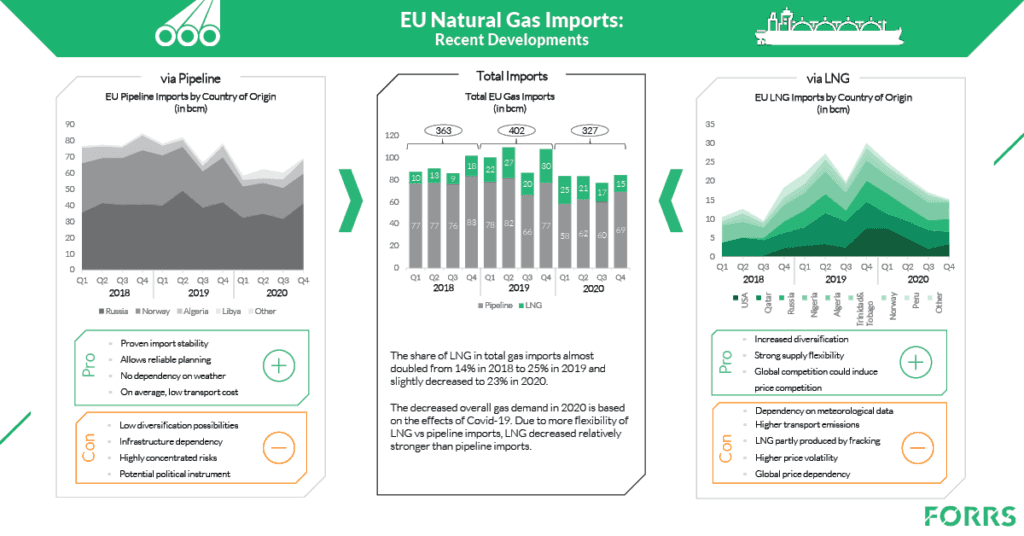28.06.2021 / 09:00
EU Natural Gas Imports: Recent Developments
Energy Markets

Historical gas import supply mix faces structural changes. While most EU countries were strongly dependent on pipeline imports in the past, LNG imports are on the rise now.
But how did the gas supply change in the past three years? Where did gas imports to the EU come from?
To answer these questions, we analysed pipeline and LNG imports from the main global sources for the period 2018 – 2020.
While the effects of Covid-19 decreased total EU imports in 2020 (325 bcm) compared to 2019 (402 bcm), the share of LNG in 2019 (25%) strongly increased compared to 2018 (14%).
In 2020, the share of total imports LNG decreased to 23%. Considering the flexibility of LNG imports, observing only a slight decrease of LNG share is remarkable.
Qatar has historically been the main exporter of LNG to the EU. With the USA having entered the market, the source dependency was mitigated, and global competition increased.
We conclude this series on gas imports to Western Europe with two posts and a focus on past and future developments. In our post focussing on past developments, we shed a light on pipeline and LNG imports from 2018 – 2020.

